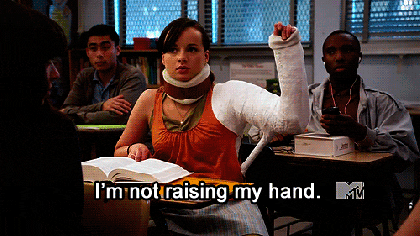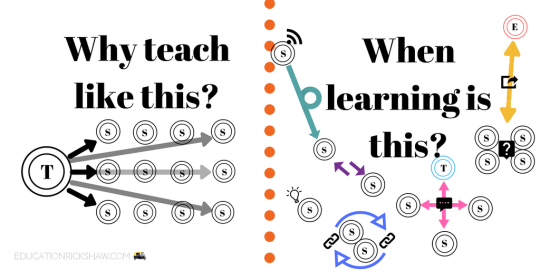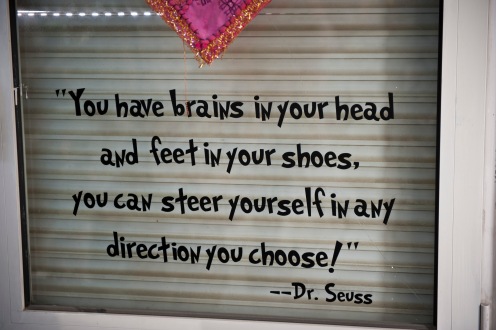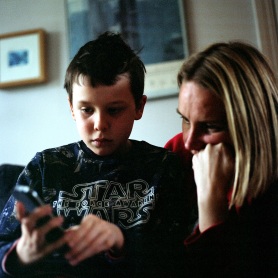Something became clear to me at AISA Conference 2017 when keynote speaker, Dr. Sonny Magana, asked the educators in the audience to raise their hands if they felt content about the state of educational technology in their schools. For a brief moment a room full of educators from a variety of schools, backgrounds, and teaching positions was brought to a silence when not a single person was able to confidently raise their hand. Teachers aren’t happy with how edtech is going; even U.S. Congress has a better approval rating than zero.

I imagine Dr. Magana has facilitated this same demonstration at multiple conferences, and wielded the same results. You can pick apart the reasons behind this, from poorly funded edtech programs in some schools, to the need for organization-wide edtech training for teachers and administrators. Ultimately for me it points to a general lack of goal consensus and collective efficacy when it comes to edtech implementation.
In an effort to achieve a bit more goal consensus and collective efficacy in education today, I would like to go through eight of the top barriers, reasons, or excuses that I’ve come across for not using technology, and in the process try to knock down some of the barriers that we create for edtech implementation. It’s my hope that the next time we’re polled on the state of contentment towards education technology in our schools, that we might see a few more hands raised.
There are a lot of places with bad internet, and, having lived in the sands of Sudan as well as during a strange shark attack on Vietnam’s undersea internet cables, I definitely sympathize.

As was the focus of one of our earlier posts, “Poor internet connection” not good enough reason to abandon tech, your lessons do not have to be internet dependent, and you can plan ahead to make sure that you’re not scrambling when the internet is not cooperating. In the most desperate of internet circumstances, you can go entirely internet-less, which I picture looking very application-based with absolutely no browser use or streaming. Not ideal, but you can get kids inquiring, brainstorming, note-taking, journaling, etc, in a variety of applications that do not require an internet connection.

With what seems like a rising phenomenon of cell phone addiction and device obsession, it can be easy to become an activist and find yourself wanting to use the classroom as a place of escape from the perils of our digital world. The funny video below proposes one way to increase face-to-face interactions in today’s society.
Every educator I’ve ever met, including edtech’s greatest proponents, believes in face-to-face. Across the board. We all need kids to be speaking, listening, and being submerged into language-rich learning environments. I’m a huge fan of the face-to-face class debate, socratic seminar, and turn and talk. However, I also see value in the social interactions and the language used in online forums, podcasts, instant messaging, email, social media comments and updates, and blogging, for example.
In my classroom, the conversation can start face-to-face and then get extended through technology, but sometimes it starts online and then gets extended through a face-to-face class discussion. When you visit my classroom, you will typically see students socializing, communicating, and exchanging with, yes, an iPad in their hands. Everyone believes in face-to-face learning, and it is clear that digital tools can also enhance the learning and extend the conversation beyond the classroom walls.

I don’t like the use of the word “balance” to describe technology integration. Perhaps a better word than “balance” is “authentic”; Instead of choosing to use an iPad one day and then a pencil the next, I look at the goal of the learning task and ask the question, “How best might students learn this?”
Since technology is merely a tool for learning, we shouldn’t plan our lessons around which tool to use or not use, or waste our time trying to determine the perfect ratio of time spent on analog vs. digital technology. That would be like if I decided one day to live a “balanced life” by cooking on a strict regimen of 50 percent spatula-prepared meals and 50 percent chopstick-prepared meals. Doesn’t it make more sense to plan your meals around other goals like nourishment or craving satisfaction, rather than the bizarre balance of cooking utensils? Technology is a tool for learning, not the goal of teaching.
I believe that the classroom should reflect the reality of our digital world. I teach in a 1:1 device classroom, and students use technology in some capacity for every lesson. The key for integration in my classroom is that technology is never used for the sake of using technology. Technology is used to enhance instruction, to maximize learning opportunities, and to redefine and transform what it means to be a learner in the 21st century.

It is natural for us to rely heavily on our own experiences to inform our practice. But in a world that is changing before our eyes, we professional educators have to look beyond how we learned and start imagining the classroom of the 21st century. You may not have learned with digital devices on hand, so you are rightly skeptical and wary of the implications for changing how you teach when you haven’t seen anyone teach or learn that way. For a while I was equally skeptical – Afterall, my first reaction to the iPad was that it was just an oversized smartphone, and now I’m using them in my classroom everyday!

I see my own education as being something between how many veteran teachers learned, and how my students are learning today. I graduated highschool in 2007, and mobile technology was already an integral part of my social life. It just hadn’t taken a truly prominent role in the classroom yet. While my education might have been largely traditional and lo-tech, one could sense what was on the horizon. As we learn more and more about the transformative nature of technology that is integrated with research-based models, we have to act on the research while also keeping a critical eye on the latest developments.
Too much screen time is a concern that I’ve heard from educators and parents alike, and it is something to be thinking about. Rather than delve into it deeper here, let me point you to a great blog post on Mr. Hill’s Musings, titled “Screen Time: What Does the Research Say?” In his post, Adam enlightens us with a line that I think every teacher should have on the tip of their tongue when faced with a worried parent: Not All Screen Time Is Equal.
“Instead of obsessing over the quantity of screen time, we should focus on improving the quality of it”
Let’s face it, these devices are not going away. In order to improve the quality of the student learning experience, we need to continuously ask ourselves some important questions. Do we wish to use technology for passive consumption, or for creative contribution? And since so much of a students’ unsupervised screen time takes place after school, how might we best educate parents so that our young people are not using these devices right before bed, or solely for entertainment purposes? Finally, if we do take the device away at home, what is replacing it? Are kids going to simply fill their unsupervised iPad time with unsupervised television time?
Screen time is an important issue today, but it should not be used as an excuse for not using technology to enhance learning. Not all screen time is equal, and we should be focusing on improving the quality of the time students spend in front of a screen.
Ask any teacher and they will tell you that they are pressed for time. The demands of curriculum, pastoral care, reporting, assessing, and planning make it so that every year feels like a race against the clock. Adding “technology lessons” feels like just another thing thrown on the plate of overworked and underpaid educators.

However, most good schools are not adding technology as an extra subject to a classroom teacher’s workload, but rather are prescribing an integrated approach to education technology. Technology should enhance and transform curriculum and instruction – not create more work for anyone. I teach math using technology. I teach reading using technology. I rarely teach technology, and I try to never use technology for the sake of technology. While there will always be some need for stand-alone technology instruction, especially when it comes to introducing a newer technology to students, I find that these small lessons lead to increased efficiency and independence by the students, which saves us time during our busy day.
Compared to my first year of teaching where I felt that the copy room had become my second home, my planning now feels much more laid-back as I am able to deepen learning experiences within a virtual learning environment without the frustrations of paperjams and botched copy jobs. My students are often the ones that create the online resources that we use in class, and the permanence of these resources allows for me to use them next year and the year after that. Technology gives me more time to do the real stuff of teaching, and it puts the onus on the student to take control of their learning and to do the thinking.

There are so many ways to rethink and re-conceptualize all of the subjects at school – art, music, P.E., drama, etc – so that they meet the needs of the 21st century learner. What is important is that the goal of the learning is identified, and that the teacher uses the best tools available to facilitate the learning of the skills and concepts. Nobody (I hope) is advocating that art teachers throw away their brushes and music teachers trash their instruments and do everything entirely on ArtSet or GarageBand. That just wouldn’t be the best way to learn art or music.

Check out the above sketch of educationrickshaw.com’s logo during the drafting stage. This image is a PNG file, and it was rendered completely with digital tools. The artist who drew it for us lives in the U.S and we live in Sudan. The original file is currently on my computer and saved to my DropBox and Google Drive. Our collaboration wouldn’t have been possible without the help of email, Facetime and IM. A digital tool might have been what was used to create this piece, but a whole lot of additional tech tools were used for communication, sharing, archiving, and publishing. This is collaborative art in the 21st century, and it’s just a snapshot of what I would expect in a forward-thinking art classroom today.
In another example, I invite you to think about two very different dance teachers for a moment: One that doesn’t use technology (A), and one that does (B).
Teacher A: Teaches dance moves to class through modeling and whole group instruction. Has students pair up and practice dance moves together. Students plan a dance and perform it to the rest of class. The end.
Teacher B: Teaches dance moves to class through modeling, whole group instruction, and through supplemental YouTube videos from expert dancers. Has students watching dance videos embedded on their class LMS and creates a shared, public space for his students to plan, reflect, comment, like, and exchange ideas about their unit. Students record their dances, edit their dance routines on iMovie and published them onto a shared blog that includes their parents, their international pen pals, and the larger school community.
The above teaching archetypes are ones that I’ve witnessed in schools I’ve worked in and you can tell which I prefer. The technology-rich learning experience in Teacher B’s class is much more meaningful than the more traditional approach of learning dance in Teacher A’s class.


If your school isn’t doing anything to teach you how to use the tools you’re required to teach with, then educate yourself. Take a free online training, or simply sit on your couch and play around with your device. Form a club of teachers who want and need to sit together to play around edtech tools (See: Teachers Need Tech Sandbox Time). How many times this week have you talked with your Director of Education Technology, or your technology support crew? They’re there to help. The time to learn is now, even if your school just isn’t doing anything to help you.
Thank you for reading this post, and engaging in some of the ideas on this blog. Having started my career in outdoor education as a camp counselor at a summer camp I’m a big fan of going unplugged once in awhile. I also understand that we live in a digital world that is constantly changing, and that our classrooms have to reflect this reality. While I respect the opinions of all teachers that are guilty of erecting these false barriers, I also think that these ideas are going the way of the dinosaur. Once we remove these barriers by imagining the classroom of the 21st century, we can truly transform and redefine learning opportunities for our students.
– Zach Groshell @MrZachG
Come join our Facebook Group, Over-Posting Educators!









Very well written and very true. In general people are very reluctant to use technology probably because their comfort zone is traditional no-tech teaching.
You dealt with every excuse very well!
LikeLiked by 2 people
Spot on
LikeLiked by 1 person
Thanks leybrad 😛
LikeLike
Well said/written, Mr Zach. Thankfully, there is less room for excuses. While it is good to take the initiative to teach oneself skills via an instructional video and/or messing around with the device itself, good coaching should also be given. The outcome? Even less excuses!!
LikeLiked by 1 person
Thanks Brian! Good luck moving things forward 😊
LikeLike
Hi Zach,
Great post and very well written. Many will be able to relate to this. I agree with Sahar; in many cases these are just excuses by reluctant teachers who are deep within their comfort zone and unwilling to change what they do.
I can add one more: “Traditional skills are still important” (much like the “face-to-face” excuse). Tech shouldn’t replace reading/writing/maths. It’s a tool that can enhance many areas of learning, including the basics.
Merry Christmas, Zach and Stephanie!
Adam
LikeLiked by 1 person
Another excuse..’ I have a technology phobia..this is not just my game’
Although when it comes to Facebook..Skype..WhatsApp..even our grandparents are hooked to it..
LikeLiked by 1 person
Hi Sahar,
Absolutely! I made the same point in my technophobia post: https://mrhillmusings.com/2017/10/29/my-advice-for-technophobic-teachers/
Best,
Adam
LikeLiked by 1 person
Thanks for commenting and Merry Christmas to you too! There are some traditional tools that will inevitably disappear – I don’t know when was the last time I used a washboard 😂 but I imagine the skills are much less likely to see the same drastic change. Maybe a refocusing and a reevaluating of what is important, like legible handwriting vs perfect handwriting, for example.
LikeLiked by 1 person
First, I like to thank you for hard work and the details and possibilities of classroom technology.
In my opinion, top barrier is the teaching theory of school system for not using educational technology in the classroom. We know that teaching is everything in education and we are providing conventional learning for our students. Educational technology has been designed on the theme of teaching performance. Classroom technology acts as virtual subject teachers. Learning mechanism of brain is never focused for the high academic performance of our students.
The keynote speaker asked the educators, never inquired of student’s choices. Educators are stressed because of massive work loads and they can’t think of high technology.
Subject matter is written in books and book to brain knowledge transfer may be fast by applying technology in classroom. This is the brainpage theory of school system in which teaching is not necessary and direct learning occurs in the learning process of classroom.
High speed learning means everything is finished in classroom and homework won’t be required. Students are spending seven hours in school and sufficient for the modulation of brainpage processing.
We have to change the dimensions of school system in which the direct approach of knowledge chapters will be launched for the advancement of science and technology.
Thank you very much.
LikeLike
I agree with authentic integration. The reasons you give for tech not being used seem authentic to me. They are the same reasons I hear teacher give. We need to teach children to use technology for real purposes. It is a part of their world after all, and I’m pretty sure it won’t go away.
LikeLike
Well written and very accurate.
LikeLike
Technology is prevailing.
But after doing engineering you can get a job with the help of Internship.
http://Www.mychatri.com is a good platform.
LikeLike